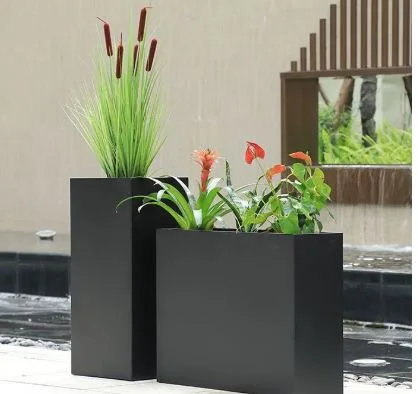Choosing the Perfect Flower Pot for Every Plant
Finding the right flower pot is more than just picking something pretty to hold your plant. The type of pot you choose can make a huge difference in how well your plant grows, how healthy it stays, and even how long it lives. For plant lovers, the right pot is not only about style but also about function. Different materials, sizes, and designs can affect moisture retention, airflow, and root development. Choosing carefully means giving your plants the best possible home.
If you have ever wondered why some plants thrive while others struggle despite good care, the answer could be sitting right under them, the pot. Understanding the features of a flower pot will help you match it to the needs of your plant while keeping your space visually appealing.
Understanding Plant Needs Before Picking a Pot
Every plant has its own set of needs, and the right flower pot must cater to those requirements. Some plants, like succulents and cacti, thrive in dry conditions and prefer pots that allow water to drain quickly. Others, like ferns or tropical plants, need a pot that can hold moisture for longer.
Before choosing a pot, think about the environment your plant needs. Is it a sun-loving plant that enjoys quick-drying soil, or is it a shade plant that likes steady moisture? Matching these needs with the right pot ensures better growth and fewer plant health issues.
Choosing the Right Material for Your Flower Pot
The material of your pot directly affects plant health. Clay or terracotta pots are porous, allowing air and moisture to move through the walls. This makes them ideal for plants that dislike wet roots, but they dry out faster. Plastic pots, on the other hand, retain moisture longer and are lightweight, making them perfect for plants that prefer damp soil.
Ceramic pots, often glazed for decorative purposes, strike a balance between moisture retention and style. Metal pots can look sleek but may heat up quickly in direct sunlight, which can stress plant roots. Wooden pots provide a natural look and good insulation but require proper lining to prevent rot. Understanding these differences will guide you toward the best material for your specific plant.
Size Matters: Picking the Correct Pot Dimensions
The size of the pot is just as important as its material. A pot that is too small can restrict root growth, leading to a stunted plant. Conversely, a pot that is too large can hold excess water, causing root rot. The ideal size depends on the plant’s root system and growth stage.
A good rule of thumb is to choose a flower pot that is one to two inches larger in diameter than the current root ball for small plants, and two to four inches larger for bigger plants. This gives roots room to grow without overwhelming them with extra soil that stays wet for too long.
Importance of Drainage in a Flower Pot
Drainage is a key factor in pot selection. Without proper drainage holes, excess water can accumulate at the bottom, suffocating roots and encouraging fungal growth. Most plants require a pot with at least one drainage hole to ensure healthy root development.
If you love a decorative pot without drainage, you can use it as a cover pot by placing a functional plastic pot inside. This allows you to keep the aesthetic appeal while ensuring your plant’s roots have the drainage they need.
Matching Pot Design to Your Home Style
While functionality is vital, style also matters. Your choice of flower pot can enhance the overall look of your home or garden. Minimalist interiors often pair well with sleek ceramic or metal pots in neutral tones, while rustic or bohemian spaces shine with terracotta or hand-painted designs.
Outdoor spaces may require weather-resistant materials like fiberglass or concrete, which can withstand changing climates. The right design choice ensures that your plants not only grow well but also blend beautifully into your space.
Considering Weight and Mobility
The weight of a pot might not seem important at first, but it becomes a big factor when moving plants for sunlight, cleaning, or seasonal changes. Heavy materials like stone, concrete, or large ceramic pots provide stability but can be difficult to move.
If you need flexibility, lightweight materials like plastic or resin offer easy portability. Some gardeners even use pot stands with wheels to balance stability with convenience, especially for larger plants that need occasional relocation.
Seasonal and Climate Considerations
Your local climate should influence your choice of pot. In hot climates, moisture evaporates quickly, making plastic or glazed ceramic pots better for retaining water. In cooler or damp climates, breathable materials like terracotta help prevent soil from staying too wet.
Seasonal changes also matter. Outdoor pots in freezing temperatures should be frost-resistant to avoid cracking. Understanding how your pot material interacts with your environment ensures long-term durability and plant health.
Caring for Your Flower Pots
Even the best pot needs maintenance to support healthy plants. Over time, minerals from water and fertilizer can build up on pot surfaces, especially on porous materials like terracotta. Cleaning pots between plantings prevents the spread of pests and diseases.
For reusable pots, wash them with a mild soap solution and rinse thoroughly. Ensure they are completely dry before planting again. Regularly checking for cracks or damage will also help you catch issues before they harm your plants.
Why the Right Flower Pot Makes All the Difference
The perfect pot is more than a container, it is a micro-environment where your plant grows, breathes, and thrives. By considering material, size, drainage, and style, you give your plants the best chance to flourish. When you choose a pot that meets both the needs of your plant and your own design preferences, you create a space that is not only healthier for greenery but also more inviting for you.
The next time you select a flower pot, think of it as choosing a home. Just as the right home can make a person happy, the right pot can make your plant vibrant, strong, and beautiful for years to come.






